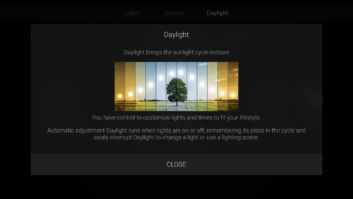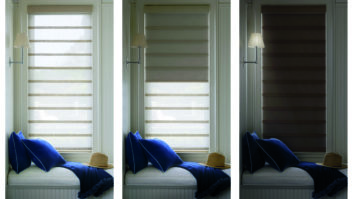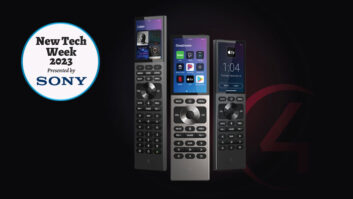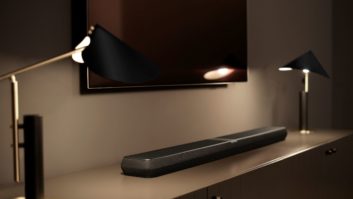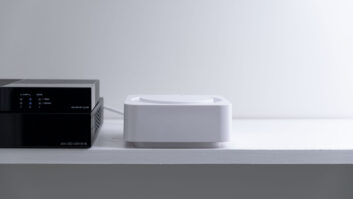When you get right down to it, automation controllers seem like a curious thing to get excited about, don’t they? You’ve got some ins, some outs, some what-have-yous, and if your home automation platform of choice offers a variety of controllers, you pick the ones whose innies and outies best fit the job you’re working on. Simple as that, right? So why is everyone making such a brouhaha over Control4’s new EA line of entertainment and automation controllers?
I’ll be the first to admit that I’ve contributed to the hype myself. Was it justified, though? That was the question running through my mind as I unboxed the company’s new EA-3 and EA-1 entertainment and automation controllers and readied myself for the laborious process (or so I thought) of replacing my existing Control4 system with the new entry-level and mid-priced solutions in the EA line.
The numerical designations of these new EA controllers, by the way, indicate the number of independent, simultaneous audio zones that each controller is capable of outputting. The new flagship EA-5 (five zones) simply would have been overkill for my home and my system, I figured, as I’ve been running a pair of HC-250s for the past three and a half years with no problems to speak of (or so I thought) and there aren’t five zones worth of audio in my home to begin with. And on paper, the move from dual HC-250s to the EA-1 and EA-3 is pretty much a lateral one, if you ignore the dramatic increase in processing power. The combined total is roughly the same in terms of MSRP and connectivity, but this does bring up an important question: given that I was using two one-room Control4 controllers to operate my home before, why not move to a pair of EA-1s? The answer: Mostly because the company doesn’t allow it.

The Control4 EA Line
The entry-level controller in the new lineup is strictly for single-room use, or for expanding a larger Control4 system into additional rooms. For a single-room system, the EA-1 is awesome, but as soon as your customers want to add a second room, either an EA-3 or EA-5 is pretty much essential.
Getting back to the installation of these two new controllers, though, I’ll admit I felt a little trepidation at first. I’d heard from a couple of dealers that they’d had problems with the new Migration Wizard built into Composer Pro, which automates the process of moving a system and all of its connections to new control hardware. And the thought of migrating my system manually gave me the heebies.
Thankfully, I had no such problems. The process went smoothly, and total installation of the two new controllers, including hardware setup and migration of all my bindings and connections (for 44 devices in total), took a grand total of 35 minutes. And that’s not counting the time it took me to read over the documentation for the Migration Wizard, but it is counting the time it took for me to contact The Drivers Lab and get a new license key for my Ecobee driver. Everything else copied over perfectly, including scenes and programming. The longest step by far was migrating the ZigBee mesh from the old hardware to the new.
And really, for all the talk about the high-resolution and multi-room audio capabilities built into these new EA controllers, ZigBee performance is where I’m noticing the biggest day-to-day benefit. All of the ZigBee devices in my home now respond to button presses more quickly than my pit bull Bruno responds to the sound of a crinkling potato chip bag. The occasional delayed responses that I previously attributed to simply having too damned many wireless devices in my house are no longer an issue. Volume commands in my home theater are processed at the sorts of speeds by which only gossip normally travels. My front door unlocks as if it’s reading my mind, and the time-of-day-dependent lighting scenes triggered by that unlocked door are delivered to my Lutron RadioRA 2 system just as quickly.

The Control4 EA-1 Bundle
Let’s not ignore the audio side of things, though, because I think that’s a huge draw of this new lineup. Simply put, the sound coming out of this new EA gear is incredible. True, the EA-1’s only audio output is HDMI, which puts the bulk of the heavy audio lifting onto whatever receiver or processor it’s connected to. Even still, there’s no denying that what it delivers is clean, dynamic, and uncolored, with no interference and an imperceptible noise floor. And it still kinda pales next to the audio capabilities of the EA-3 (much less the EA-5).
Distributed audio is something I’ve just never really considered a top priority for my home. But given the built-in multi-zone music capabilities of the EA-3, and the utter lack of programming and setup required to make it work, I decided to route its analog output through the wall to the NEAR 6XL amp on my back patio. And boom–just like that, with no additional programming to speak of (not to mention no additional hardware components), I added an outdoor audio zone to my system in the time it took me to drill a hole in my wall and find a 3.5-millimeter-to-RCA cable. Frankly, it was an order of magnitude easier than tapping into the Zone 2 capabilities of my AV preamp.
It’s worth mentioning here that adding an additional zone like this does drop the output capabilities of the system from a maximum of 192/24 down to 96/24 (at four bindings or more, it would drop down to 48/24), but as best I can tell this has absolutely zero audible impact on sound performance. No matter the resolution, the audio output of these controllers is just stupidly good.
Worth mentioning, too, are the EA line’s ShairBridge capabilities (originally added to the former flagship HC-800 late last year, but now available across the entire new lineup). Adding ShairBridge does require dragging and dropping a driver in Composer Pro, but it adds AirPlay capabilities without the need for additional hardware.
So far, ShairBridge has been the most reliable AirPlay system that I’ve ever used. It can be a weensy bit laggy, but that’s a minor complaint. All in all, ShairBridge works better for me than Control4’s Wireless Music Bridge did (although, just a reminder: the WMB also enables Bluetooth and DLNA streaming, so it’s not quite as obsolete for users of non-iThingies).
I feel like I’m barely scratching the surface of my experience with the EA-1 and EA-3 to date, but I’ll leave you with this: A few weeks back, my friend and colleague John Sciacca made a comment that really resonated with me. “Ultimately,” he said, “When I’m working on a review, the most important question is whether or not this is a product I would sell in my own shop.”
I don’t have a shop of my own, granted, so my criteria are slightly different. For me, now, the ultimate question is this: is this a product I would spend my own money on? In the case of the EA-1 and EA-3, the answer is: absolutely yes. That pair of HC-250s has been really good to me over the past three years and has fundamentally changed the way I interact with my home. But I couldn’t imagine going back to them now. There’s no doubt about it: Control4’s EA lineup is the future.
888.400.4070
control4.com
Kudos
The new controllers make music an integral part of the smart home ecosystem with fewer components, improved performance, and flawless ZigBee capabilities.
Concerns
The decision to require a more expensive EA-3 or EA-5 controller in systems with more than one room is sure to be a source of frustration for dealers who might have liked to sprinkle EA-1s around in smaller installations.
Product Specs
EA-3
► Video out: HDMI 1.4; HD 720p/1080p, 50-60 Hz
► Audio out: 1 HDMI, 1 stereo analog (3.5 mm), 1 digital coax
► Audio in: 1 stereo analog (3.5 mm), 1 digital coax
► Audio playback formats AAC, AIFF, ALAC, FLAC, M4A, MP2, MP3, MP4/M4A, Ogg Vorbis, PCM, WAV, WMA
EA-1
► Audio/Video out: HDMI 1.4; HD 720p/1080p, 50-60 Hz
► Audio playback formats AAC, AIFF, ALAC, FLAC, M4A, MP2, MP3, MP4/M4A, Ogg Vorbis, PCM, WAV, WMA
► Wireless: Wireless-N (2.4 GHz, 802.11n/g/b)
